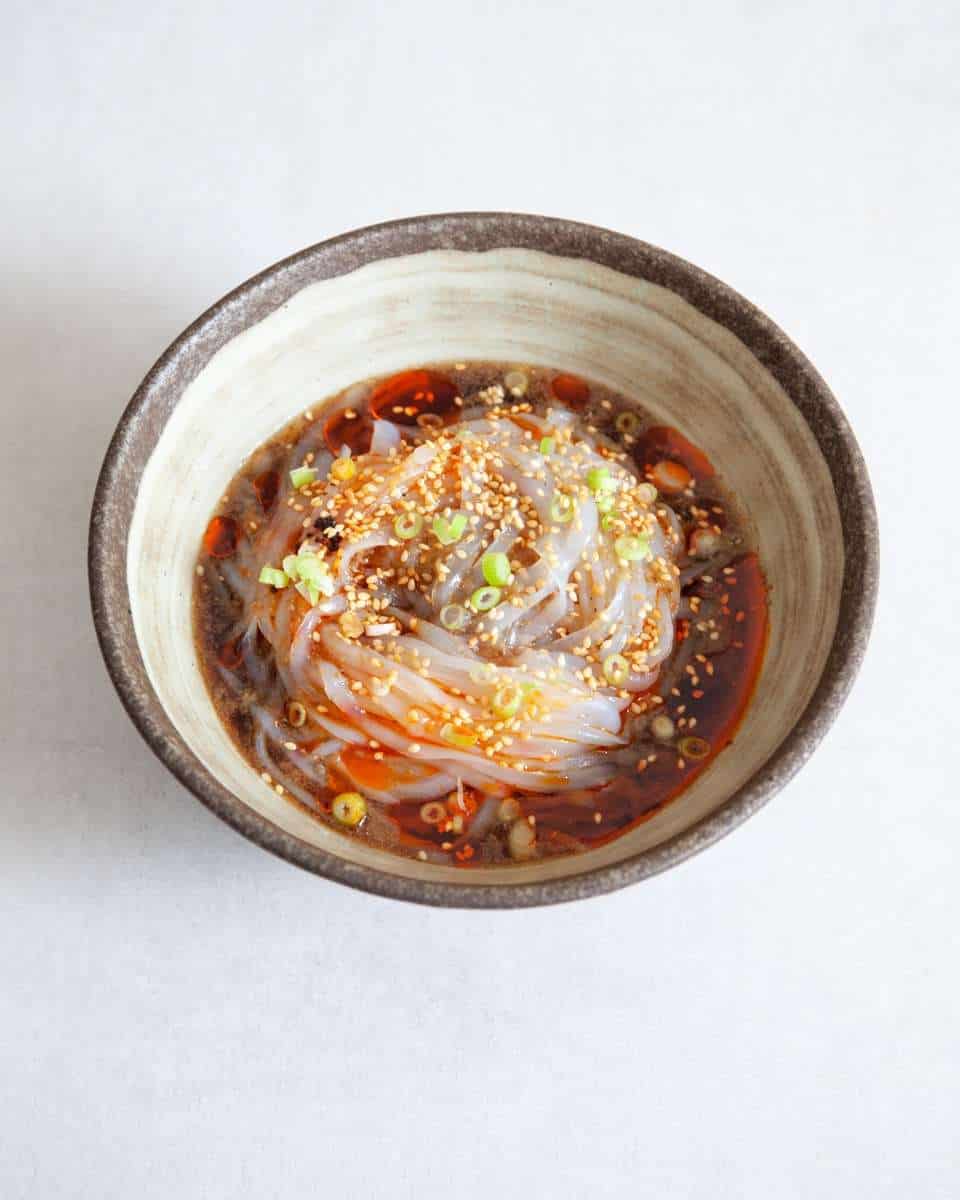Liang Pi, or “cold skin noodles,” is a refreshing Shaanxi street food made with slippery noodles tossed in a tangy spicy sauce and topped with fresh veggies.


Liang Pi, or “cold skin noodles,” is a refreshing Shaanxi street food made with slippery noodles tossed in a tangy spicy sauce and topped with fresh veggies.

Liang Pi, or “cold skin noodles,” are springy wheat-starch noodles with a unique texture. This recipe guides you to make them from scratch for a rewarding dish.

Chinese Wheat Gluten, or seitan, is a chewy, protein-rich base made by washing wheat flour–a traditional staple to make at home.

Xingren Doufu is a traditional Chinese almond tofu dessert that’s both light and satisfying. This delicate treat blends the texture of silky tofu with the subtle sweetness of almond, creating a soothing and refreshing dessert that’s perfect for any occasion. With it’s unique texture and presentation, Xingren Doufu offers a delightful twist on classic sweets.

Kao Fu, also known as Chinese braised wheat gluten, is a traditional Shanghainese dish that combines chewy wheat gluten with a flavorful mix of mushrooms, peanuts and wood ear fungus, all simmered in a savory, aromatic sauce. This classic dish is a staple in Chinese cuisine, celebrated for its unique texture and rich, umami flavors. Perfect as a main dish or a side, Kao Fu is often enjoyed during family gatherings and festive occasions.

Jian Dui, Chinese Sesame Seed Balls, are a popular snack during Lunar New Year. They are crispy on the outside, light and slightly chewy on the inside and commonly filled with a sweet red bean paste. Once the dough is cooked in the oil, they begin to inflate and double in size, which symbolises good luck and prosperity for the year ahead.

Suan La Fen (酸辣粉) is an experience for the palette and senses. The slippery noodles together with the spicy and tangy broth turn each mouthful into a fragrant and fun sensation.

On a hot summer day, nothing beats a bowl of Mung Bean Jelly Noodles (Liang Fen 凉粉). Popular in Northern Sichuan, these 90% water noodles are pure refreshment.

Black fungus, also called cloud ear mushrooms, make an exceptional addition to a stir-fry and fragrant soup or can be served on their own as a starter. Their shape turn them into the perfect vessel to hold on to the lip-smacking spicy, garlicky and tangy dressing with black vinegar, soy sauce and plenty of coriander.

These noodles will single-handedly transform the way you look at homemade food. In their simplicity lies an enormous power to let a few aromatic ingredients shine and bring colour to a dish. It is said that they get their name, Biang Biang Noodles, from the sound it makes when the chef slaps the dough onto the worktop while stretching them out.